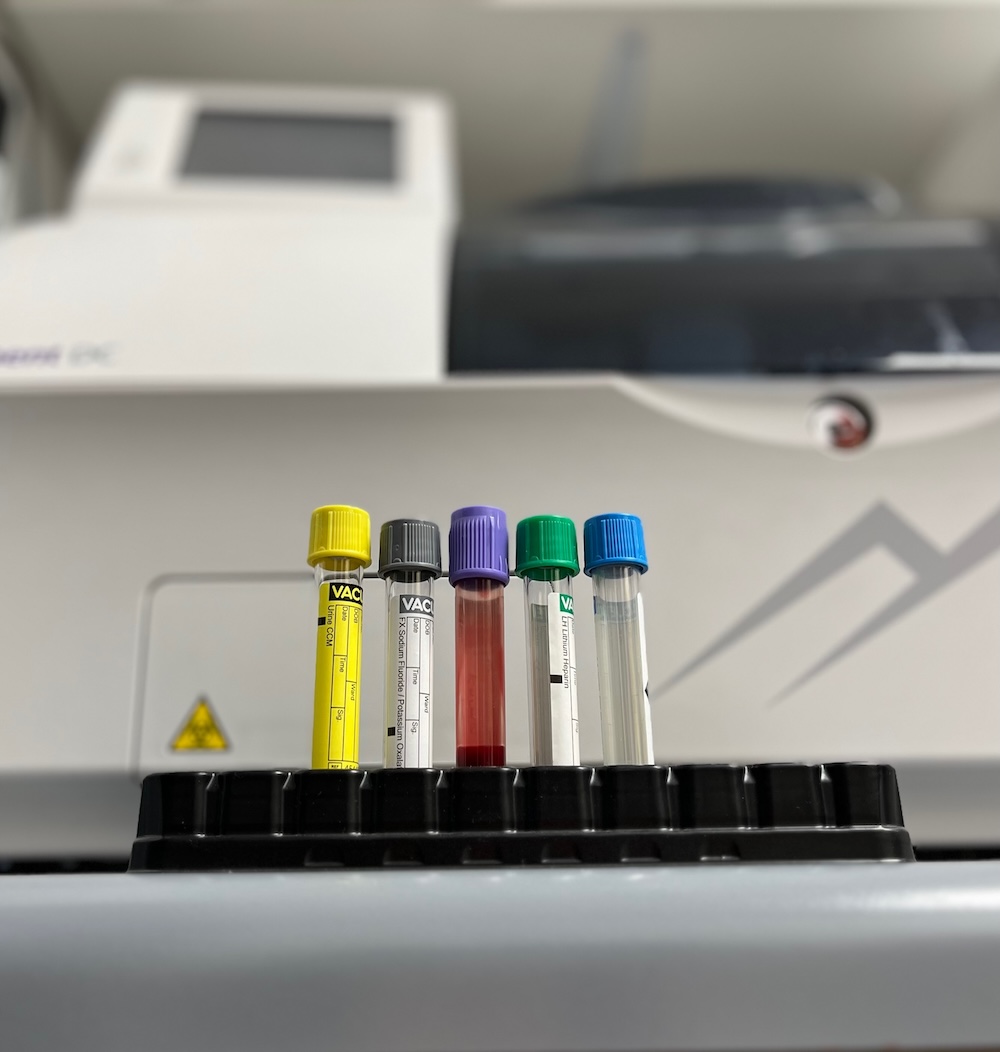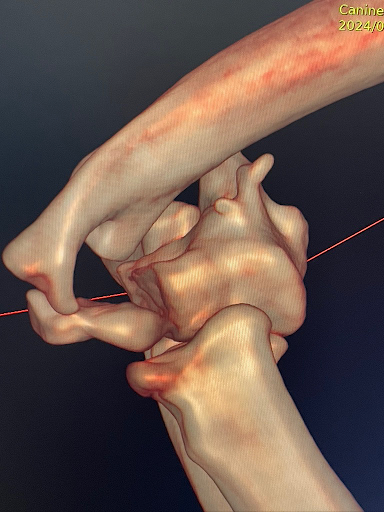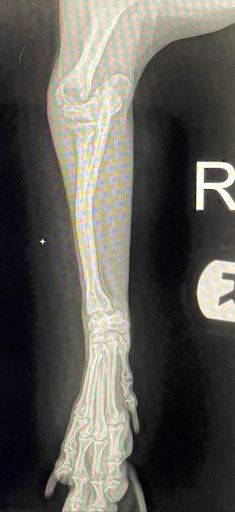Diagnostic Services

To improve patient safety and surgical outcomes, SCVSC requires a thorough pre-anesthetic assessment of all surgical patients. This standard evaluation includes comprehensive blood testing (CBC, serum chemistry panel, blood clotting assessment), urinalysis, ECG and digital radiographs (DR) of the chest. This assessment is typically performed in the in-house laboratory at SCVSC the day before or the day of surgery.

- Digital Radiography
- 3-D High Density Volumetric CT imaging
- Dynamic fluoroscopic imaging (“X-ray video”)
- Radiographic contrast studies with Digital Radiography, CT, Fluoroscopy
- Intra-operative digital radiographic imaging for orthopedic surgery
- Ultrasound
- Abdominal ultrasound
- Echocardiography for comprehensive assessment of heart disease

- Minimally invasive endoscopic biopsy of internal organs
- Arthroscopy for assessment and biopsy of disease in the joints
- Diagnostic endoscopy for assessment and biopsy of disease in the:
- Esophagus & Stomach
- Colon & Rectum
- Nasal Sinuses
- Trachea & Bronchus
- Urethra & Urinary Bladder
- Telecytology for same-day reading of a “needle biopsy” by a Board Certified veterinary pathologist
For less common and difficult to diagnose medical conditions, SCVSC has direct access to several veterinary reference laboratories that are often the only laboratory in the United States that performs a highly specific test for diagnosing some diseases. Sending biopsies and diagnostic samples to these laboratories can save cost and time to obtain a diagnosis for your pet; thus, allowing proper treatment to be initiated sooner.
Diagnostic Imaging
- Digital radiography
- Teleradiology with review of digital radiographs by a Board Certified veterinary radiologist is available for select cases or at owner’s request.
- Intra-operative digital radiographic imaging. For orthopedic surgery.
- CT— 3-dimensional High Density Volumetric Imaging
- Teleradiology with review of CTs by a Board Certified veterinary radiologist is available for select cases or at owner’s request.
- Fluoroscopy (“X-ray video”)
- Dynamic esophageal contrast (“swallowing study”)
- Tracheal collapse study
- Fluoroscopic guidance. For biopsies and orthopedic surgery
- Radiographic and CT contrast studies
- Myelography
- Excretory urography
- Vascular mapping
- Intravenous contrast for masses and tumors
- Gastrointestinal (aka “barium swallow”)
- Ultrasound:
- Abdominal ultrasound with review by a Board Certified veterinary radiologist or internist
- Cardiac ultrasound (echocardiogram) with review by a Board Certified veterinary radiologist or cardiologist
- Musculoskeletal ultrasound reviewed by surgeon
- Telecytology with review by Board Certified veterinary pathologist
- Standard in-house pre-surgical blood panel includes:
- Complete blood cell count (CBC)
- Comprehensive serum chemistry (Serum Metabolites and Catabolites) with electrolytes and blood gasses.
- Blood clotting assessment with Prothrombin time/partial thromboplastin time (PT/PTT) testing
- Urine chemistry
- ECG
- Survey thoracic radiographs with heart score
Endoscopy
- Rigid endoscopy for minimally invasive examination inside the chest (thoracoscopy) and abdomen (laparoscopy)
- Rigid arthroscopy for joint disease: minimally invasive examination inside elbows, shoulders, “knees”, hips, et al.
- Gastroscopy for upper GI disease: esophagus, stomach and upper small intestine
- Colonoscopy for lower GI disease: rectum, colon, lower small intestine
- Cystoscopy and urethroscopy and vaginoscopy: to assess the lower urogenital system
- Upper and lower airway diseases: nasal cavity, trachea, bronchi

